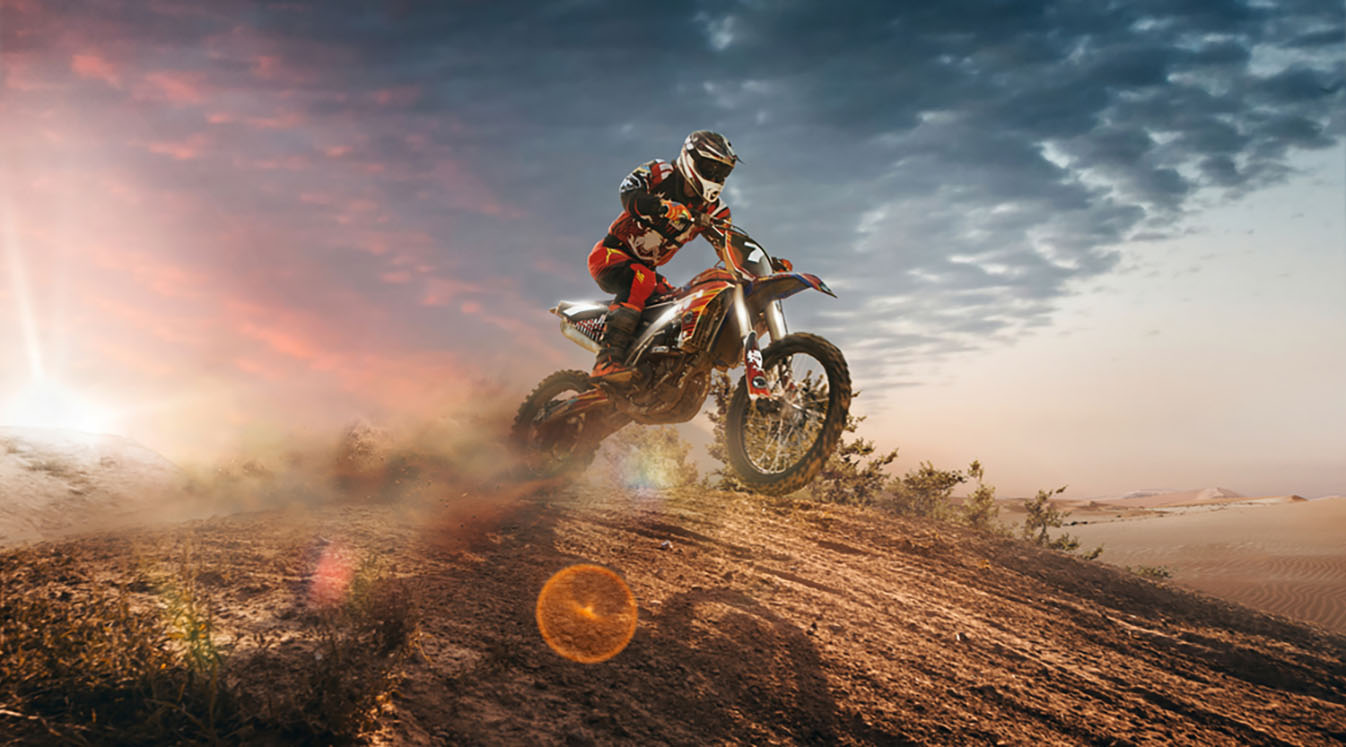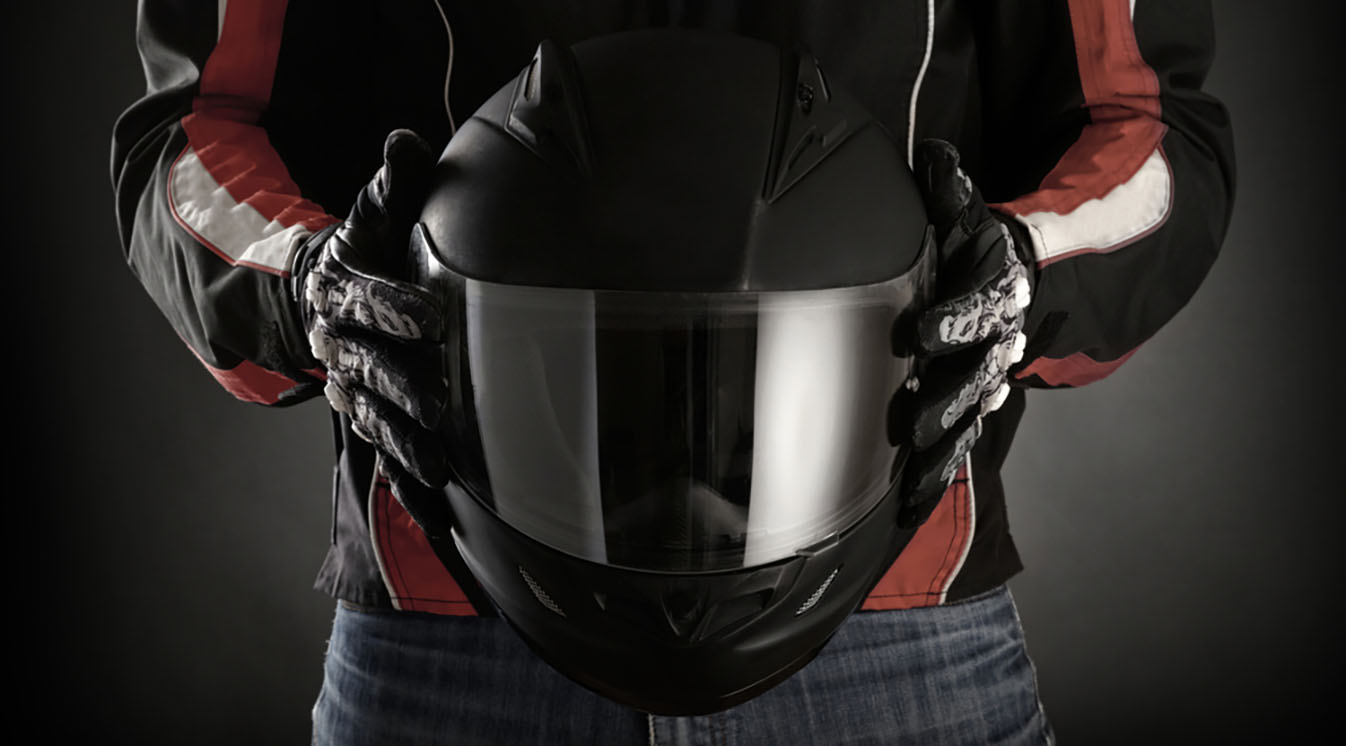What Type of Helmet?
Motocross helmets are designed to protect riders from the elements, including rocks, dirt and other debris. Motorcycle helmets are all about speed and crash protection. They come with sleek aerodynamic designs that reduce wind resistance, but that’s not necessary when you’re cruising through the wilderness. Motocross helmets are also a little bulkier than motorcycle helmets. They come with a rugged exterior and visor to fend off flying objects. They aren’t sealed like motorcycle helmets to give you more room to breathe. Motocross helmets also use chin guards to protect the lower half of your face.
If you plan on focusing solely on motocross, we suggest going with a motocross helmet. But you might want to consider buying a dual sport helmet if you enjoy riding a motorcycle as well. Dual sport helmets combine the comfort and support of a motocross helmet with the functionality and crash protection of a motorcycle helmet. You should never use a motorcycle helmet for motocross. Find the right type of helmet for the activity at hand.
Learn About the Benefits of Dynamic Mesh Communication
Bluetooth Compatibility
Your helmet should give you the option of using a helmet Bluetooth communicator. The device clips onto the side of your helmet, so you can wirelessly connect with your mobile devices using your voice. Just speak into the receiver to dial a call, play your favorite song or radio one of your companions.
Some Bluetooth headsets are only compatible with certain makes and models. Make sure the helmet works with your chosen communication system. If you use more than one type of helmet, the device should be compatible with any type of helmet.

Artur Didyk/Shutterstock.com
It’s best to use a headset with dynamic mesh communication (DMC) on top of traditional Bluetooth. DMC establishes a secure connection between you and every other person in the group. Unlike regular one-to-one setups, the connection won’t break down when someone falls out of range. If you get separated from your group, the device will automatically restore the connection so you can continue where you left off. The wilderness is bound to throw all kinds of curveballs your way, so you need to be prepared for anything that comes your way.
Size and Fit
Regardless off what type of helmet you choose, it should fit securely on top of your head. The helmet shouldn’t move or slide around when you lean forward or bend over. Securely attach the helmet to your head by connecting the strap. Adjust the length so that it isn’t too tight or too loose. Most helmets are one-size-fits-all, so you may need to shop around for the perfect size if these helmets don’t fit.
Find the Right Bluetooth Helmet Communicator for Your Needs

https://www.instagram.com/p/CgXJKmYo6pA/
Instagram/@birchynz
Durability
You will need a durable helmet that can stand up to the wear and tear of the natural world. The best motocross helmets are made with Kevlar, thermoplastics and carbon fibers. Carbon and Kevlar tend to score the best when it comes to safety reviews. Your helmet is sure to take a beating in the wild, so don’t settle for a cheaply made product that will fall apart after a few trips.
There are a lot of factors to consider when shopping for a motocross helmet. Keep these tips in mind to find the right helmet for your head.





